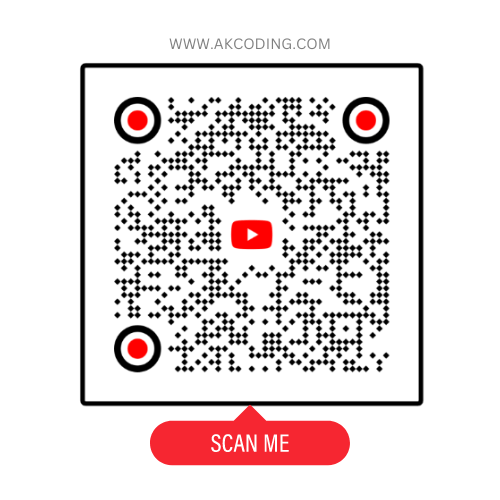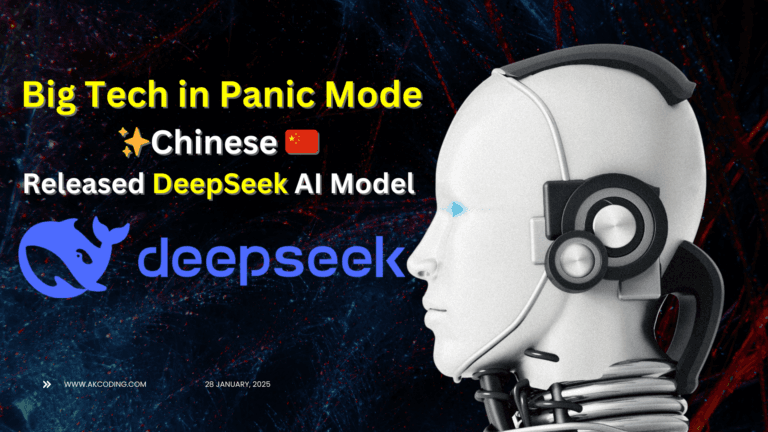
Table of Contents
What is the primary advantage of using generative ai in content creation
The primary advantage of using generative AI in content creation lies in its ability to automate and enhance creativity. Here are some key aspects of “What is the primary advantage of using generative ai in content creation”:
Efficiency and Scale
Let’s delve deeper into the efficiency and scale advantages of using generative AI in content creation:
- Automated Content Generation:
- Generative AI models, such as GPT-4, can churn out content at an impressive speed. Whether it’s blog posts, social media updates, or product descriptions, AI can create large volumes of text efficiently.
- Content creators can focus on higher-level tasks, such as strategy, while AI handles the repetitive aspects.
- Consistent Output:
- Human writers may experience variations in writing style, tone, and quality over time. In contrast, AI consistently produces content according to predefined guidelines.
- Brands benefit from maintaining a uniform voice across their content, reinforcing brand identity.
- Scalability:
- As content demands increase (e.g., during product launches or seasonal campaigns), AI can scale up effortlessly. It doesn’t tire or require breaks.
- Businesses can adapt to changing needs without hiring additional human writers.
- Multilingual Capabilities:
- Generative AI can create content in multiple languages. This is invaluable for global businesses targeting diverse audiences.
- Translating content manually would be time-consuming and error-prone.
- Bulk Content Creation:
- Need hundreds of product descriptions or thousands of social media posts? AI can handle it.
- For e-commerce platforms, AI-generated product descriptions can save countless hours.
- SEO Optimization:
- AI can analyze keywords, optimize content for search engines, and suggest improvements.
- Writers can focus on creativity, knowing that AI will enhance their work for better visibility.
- Content Personalization:
- AI tailors content based on user preferences, behavior, and demographics.
- Personalized emails, recommendations, and dynamic website content improve user engagement.
- Data-Driven Insights:
- AI analyzes data to identify trends, popular topics, and user preferences.
- Content creators can align their efforts with what resonates most with their audience.
Remember, while AI streamlines content creation, human oversight remains crucial. The magic lies in the collaboration between human creativity and AI efficiency. 🌟🤖📝
Creativity Boost
Let’s dive into the creativity boost that generative AI provides in content creation:
- Idea Generation and Inspiration:
- Generative AI models can spark fresh ideas by combining existing concepts in novel ways. Writers often suffer from creative blocks, but AI can offer unexpected angles, metaphors, or plot twists.
- Imagine an AI suggesting, “What if dragons were intergalactic travelers seeking lost stardust?”
- Exploration of Uncharted Territories:
- Collaborating with AI allows creators to venture beyond their comfort zones. Writers can experiment with different genres, tones, or styles.
- For instance, a poet might blend haiku with hip-hop lyrics, resulting in something entirely unique.
- Character Development and Backstories:
- AI can invent intricate backstories for characters. Whether it’s a mysterious detective or a quirky alien, AI-generated details can enrich storytelling.
- “Detective Amelia had a secret love for origami cranes—a habit she picked up during her days as a cryptographer.”
- Plot Twists and Unexpected Resolutions:
- AI can propose twists that surprise even the author. It might suggest turning the villain into an unlikely hero or revealing a hidden parallel universe.
- “The villain, Dr. Malachi, was actually the protagonist’s future self, desperate to prevent a cosmic catastrophe.”
- Wordplay and Puns:
- AI can generate clever wordplay, puns, and double entendres. Writers can incorporate these into dialogues, headlines, or marketing slogans.
- “The bakery’s motto: ‘Doughnut worry, be happy!’”
- Artistic Collaborations:
- Musicians, painters, and filmmakers can collaborate with AI to create music, visual art, or film scripts. AI-generated lyrics or visual prompts can inspire new masterpieces.
- “Compose a symphony that captures the melancholy of falling leaves in autumn.”
- Optimized Content Variations:
- AI can generate multiple versions of a piece of content. Writers can choose the most compelling or combine elements from different variations.
- “Try these three opening lines for your mystery novel: a) ‘The fog clung to the graveyard like a guilty secret.’ b) ‘The moon winked, revealing the hidden path.’ c) ‘Detective Luna’s coffee grew cold as the ghostly whispers intensified.’”
Remember, while AI boosts creativity, it’s essential to infuse human intuition, emotion, and personal experiences into the final work. The magic lies in the dance between AI’s suggestions and the creator’s soul. 🌟🤖✨
Personalization
Let’s explore the personalization advantages of using generative AI in content creation:
- Tailored Content:
- Generative AI can create personalized content based on user preferences, behavior, and demographics.
- For example, an e-commerce website can dynamically generate product recommendations for individual users, increasing the chances of conversion.
- Customized Marketing Campaigns:
- AI can analyze user data to craft targeted marketing messages. Whether it’s email campaigns or social media ads, personalization improves engagement.
- “Hi [User], we noticed you love adventure books! Check out our latest fantasy novel.”
- Localized Content:
- Businesses operating globally can use AI to adapt content for different regions and languages.
- AI-generated translations ensure consistency and cultural relevance.
- Dynamic Website Content:
- AI can personalize website experiences. Imagine a homepage that displays content relevant to each visitor—whether it’s news articles, product highlights, or blog posts.
- “Welcome back, [User]! Here are the latest tech trends.”
- Automated Email Personalization:
- AI can insert user-specific details (name, location, recent purchases) into email templates.
- “Dear [User], your favorite items are back in stock!”
- Content Recommendations:
- Streaming platforms use AI to suggest movies, music, or shows based on viewing history.
- “Because you enjoyed ‘Sci-Fi Thrillers,’ here are some similar titles.”
- Adaptive Learning:
- AI learns from user interactions. Over time, it refines recommendations and personalization.
- “We’ve noticed you prefer shorter articles. Here’s a concise summary.”
Remember, personalization enhances user experiences, but it’s essential to respect privacy and avoid being intrusive. The magic lies in creating content that feels tailor-made for each individual. 🌟🤖🎨
Consistency and Brand Voice
Let’s explore the consistency and brand voice advantages of using generative AI in content creation:
- Unified Brand Identity:
- Generative AI ensures that content adheres to a consistent tone, style, and messaging across various channels.
- Brands benefit from a unified voice, whether it’s blog posts, social media updates, or customer communications.
- Brand Guidelines Adherence:
- AI-generated content follows predefined guidelines. Writers can input specific rules (e.g., avoid jargon, use inclusive language) to maintain brand integrity.
- “Our brand voice is friendly, approachable, and informative.”
- Automated Social Media Posts:
- AI can create social media updates that align with the brand’s personality. Whether it’s witty tweets or professional LinkedIn posts, consistency matters.
- “🌟 Exciting news! Our new product just launched. Check it out!”
- Content Repurposing:
- Brands often repurpose content for different platforms (e.g., turning a blog post into an infographic or a podcast episode).
- AI ensures that the core message remains consistent while adapting to the medium.
- Localized Branding:
- AI-generated content can incorporate local references, cultural nuances, and regional preferences.
- “In celebration of Diwali, our team wishes you prosperity and joy!”
- Cohesive Email Campaigns:
- Whether it’s newsletters or transactional emails, AI maintains a brand-consistent voice.
- “Hi [User], your order is on its way! 🚚”
- Content Audit and Cleanup:
- AI can review existing content, identify inconsistencies, and suggest improvements.
- “Update outdated product descriptions to match our current brand messaging.”
Remember, while AI ensures consistency, human creativity adds the soul to the brand. The magic lies in striking the right balance. 🌟🤖🎙
Multilingual Capabilities
Let’s explore the multilingual capabilities of using generative AI in content creation:
- Global Reach:
- Generative AI can create content in multiple languages, breaking down language barriers.
- Businesses can expand their reach and connect with global audiences more effectively.
- Localized Content:
- AI can adapt content for specific regions, considering cultural nuances and preferences.
- For example, a travel blog can generate articles about local cuisine, landmarks, and customs in various languages.
- Translation Efficiency:
- Manually translating content is time-consuming and error-prone. AI can provide quick and accurate translations.
- “Translate this blog post from English to Spanish.”
- Consistent Messaging:
- Brands can maintain a consistent voice across different language versions of their content.
- AI ensures that the core message remains intact, regardless of the language.
- Multilingual Customer Support:
- AI chatbots can assist users in their preferred language, enhancing customer experience.
- “¿En qué puedo ayudarte hoy?” (How can I assist you today?)
- Language Learning Tools:
- AI-generated exercises, quizzes, and language models aid learners in practicing different languages.
- “Practice conjugating verbs in French: ‘Je parle,’ ‘Tu parles,’ ‘Il/Elle parle.’”
Remember, while AI bridges language gaps, understanding cultural context remains essential. The magic lies in creating content that resonates with diverse audiences. 🌟🤖🌎
Content Enhancement
Let’s explore the content enhancement advantages of using generative AI:
- Grammar and Clarity:
- AI can analyze content for grammatical errors, awkward phrasing, and readability.
- For instance, it can suggest replacing passive voice with active voice or simplifying complex sentences.
- SEO Optimization:
- AI tools can recommend relevant keywords, meta descriptions, and headers to improve search engine visibility.
- “Optimize this blog post for the keyword ‘generative AI in content creation.’”
- Summarization:
- AI-generated summaries condense lengthy articles or reports while retaining essential information.
- “Create a concise summary of this research paper.”
- Enhanced Visuals:
- AI can generate alt text for images, making content more accessible.
- “Describe the image: a bustling cityscape at sunset.”
- Fact-Checking and Citations:
- AI cross-references content with reliable sources, ensuring accuracy.
- “Verify the statistics in this infographic.”
- A/B Testing Variations:
- AI suggests different versions of headlines, CTAs, or email subject lines for testing.
- “Provide three alternative headlines for this product announcement.”
Remember, while AI enhances content, human judgment remains essential. The magic lies in combining AI’s efficiency with human creativity and discernment. 🌟🤖✍️
Exploration of New Genres and Styles
- Content creators can experiment with different genres, writing styles, or artistic forms by collaborating with AI.
- This exploration can lead to surprising and delightful results.
Conclusions
Here are the conclusions regarding the primary advantage of using generative AI in content creation:
- Efficiency and Scale:
- Generative AI allows for rapid content generation, saving time and effort.
- Content creators can produce more material in less time, freeing them to focus on other tasks.
- Creativity Boost:
- AI provides fresh ideas and novel perspectives, overcoming creative blocks.
- Collaborating with AI leads to innovative content and unique angles.
- Personalization:
- AI tailors content to individual preferences, improving engagement.
- Personalized content resonates better with audiences.
- Consistency and Brand Voice:
- Brands can maintain a consistent tone and style across channels.
- AI ensures uniformity in messaging.
- Multilingual Capabilities:
- AI generates content in multiple languages, expanding global reach.
- Translation becomes efficient and accurate.
- Content Enhancement:
- AI optimizes existing content, suggesting improvements.
- It summarizes, fact-checks, and enhances readability.
Remember, while AI offers advantages, human creativity remains essential for exceptional content. 🌟🤖📝
FAQs
Here are some frequently asked questions (FAQs) for the topic “What is the primary advantage of using generative AI in content creation”:
1. What is Generative AI?
Generative AI is a type of artificial intelligence that creates new content by learning patterns from existing data. Unlike traditional AI, which primarily analyzes or categorizes information, generative AI can produce novel outputs such as text, images, music, and even video.
It works by using algorithms like neural networks, specifically generative models such as Generative Adversarial Networks (GANs) or Variational Autoencoders (VAEs). These models learn from vast amounts of data and then generate content that resembles the training data but is unique in its own right.
For example, a generative AI trained on a large dataset of paintings can create new, original artwork in the style of those paintings. Similarly, a generative AI trained on a corpus of text can write articles, stories, or code snippets that are original but influenced by the style and structure of the texts it learned from.
Generative AI is widely used in various industries for tasks like content creation, design, entertainment, and even product development. Its ability to quickly produce high-quality, diverse content makes it a valuable tool for businesses and creatives alike.
.
2. How is Generative AI used in content creation?
Answer: Generative AI is used in content creation to automatically generate text, images, and other forms of media. It can assist in writing articles, creating visuals, designing graphics, producing music, and even generating videos, making the content creation process faster and more efficient.
3. What is the primary advantage of using Generative AI in content creation?
Answer: The primary advantage of using Generative AI in content creation is its ability to automate and accelerate the content production process. It allows creators to produce large volumes of high-quality content quickly, freeing up time for more strategic and creative tasks.
4. Can Generative AI improve the quality of content?
Answer: Yes, Generative AI can improve content quality by providing suggestions, enhancing creativity, and ensuring consistency in style and tone. It can also analyze large datasets to create content that resonates with target audiences.
5. How does Generative AI enhance creativity in content creation?
Answer: Generative AI enhances creativity by providing new ideas, offering diverse content variations, and enabling creators to experiment with different styles and formats. It can also break creative blocks by generating fresh and innovative concepts.
6. Is Generative AI suitable for all types of content creation?
Answer: While Generative AI is highly versatile, it may not be suitable for every type of content creation. For instance, highly nuanced or deeply personal content may still require a human touch. However, it excels in areas like copywriting, graphic design, and data-driven content.
7. What are some common applications of Generative AI in content creation?
Answer: Common applications include generating blog posts, social media content, marketing materials, product descriptions, music compositions, visual art, and even video scripts. It is also used for personalization in content marketing and creating data-driven insights.
8. Does using Generative AI in content creation require technical expertise?
Answer: While some generative AI tools may require technical expertise, many platforms are designed to be user-friendly, requiring little to no programming knowledge. These tools often feature intuitive interfaces that allow users to generate content with minimal effort.
9. Are there any ethical concerns with using Generative AI for content creation?
Answer: Yes, ethical concerns include issues related to plagiarism, misinformation, bias in generated content, and the potential loss of jobs for human creators. It’s important to use Generative AI responsibly and ensure transparency in its application.
10. Can Generative AI replace human content creators?
Answer: Generative AI is a powerful tool that can assist and augment human creativity, but it is unlikely to completely replace human content creators. The best results often come from a collaboration between AI and humans, where AI handles repetitive tasks and humans focus on creativity and strategy.
Read other awesome articles in Medium.com or in akcoding’s posts.
OR
Join us on YouTube Channel
OR Scan the QR Code to Directly open the Channel 👉




